You want better local rankings. But rankings won’t pay your bills, so you also want to do a better job of converting traffic. One is useless without the other, so you need to do both from the start.
A few months ago I weighed in on a Google+ post where the concern was how to “balance” local SEO and conversion-rate optimization on your site. As I mentioned there, working on your local SEO and boosting your conversions may sound like two separate projects, but they’re not. There is a lot of overlap, and there are many ways to kill two birds with one stone.
Here are some steps that might help you boost your visibility and traffic and your ability to convert that traffic:
1. Create a separate page on each specific service you offer – or at least on the services for which you want to rank and get more customers.
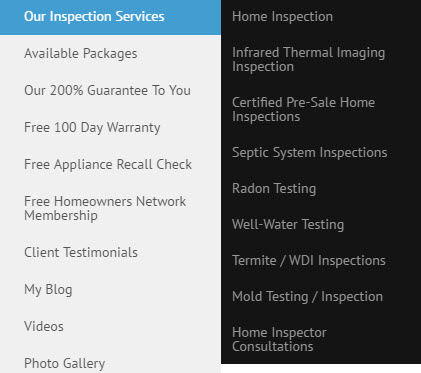
For instance, until you rank at the top of the local heap for “dentist,” you’re more likely to rank for “pediatric dentist” if you have an in-depth page on how you do a great job for kids. You’re also more likely to interest parents who are looking for that specific service – more so than if you come across as a generalist.
2. Make those pages in-depth and detailed, with your USP info, plenty of reviews/testimonials on the page, good photos (preferably not stock), and a clear call-to-action at the end. You’ll give both Google and people more to sink their teeth into.
3. Create in-depth FAQs pages – or, in general, just answer questions on your site Q&A-style. Not only will this help you convert more traffic, but it’s also more likely to get the right people to your site – the ones who know exactly what they’re looking for. I’ve written on how you can do this. Also, it’s the best way you can apply what Dan Leibson calls “Answer-box SEO.”
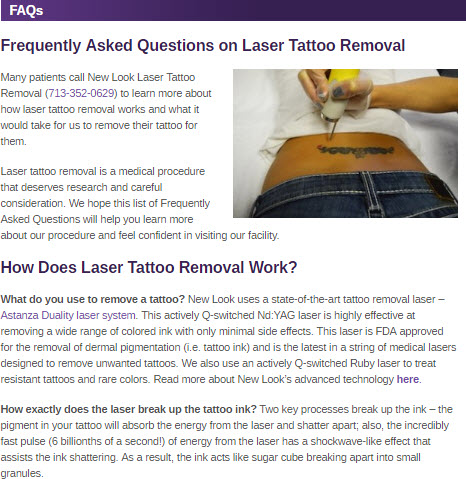
4. Build city pages that don’t suck.
5. Make your site more user-friendly. Google knows if people get to your site and just hit the “back” button, or if they venture deeper and spend some time looking around and take the next step.
Include plenty of internal links to relevant pages, create a main “Services” or “Products” page, make your contact info hard to miss, and remember that there’s no such thing as too long – only too boring. See my post on analyzing visitors’ click-behavior.
6. Having a mobile-friendly site. It doesn’t need to be mobile-responsive; it can be on a separate domain (m.yourwebsite.com) – like the kind you might get from Duda. It simply needs not to frustrating for the average person who might pay you for something.
7. Write catchy title and description tags. When done right they can get you higher click-through than the next guy gets. That will likely help your rankings if you sustain it, and it can bring more of the right customers to your site (as opposed to tire-kickers). You attract to the degree you repel.
8. Embed a prominent Google Map – in a place on the site where visitors might want to know how they can get to you.
I like to customize the dimensions and put it in the footer. Making it easy to get driving directions is smart for obvious reasons and, when combined with an influx of reviews, driving-directions lookups may be a minor ranking factor.
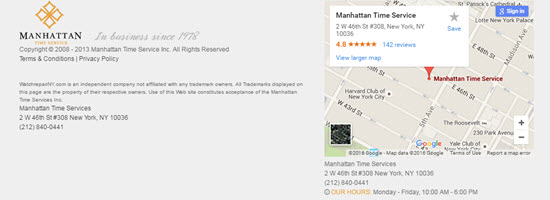
9. Offer old-school driving directions. Landmarks, turn-by-turn, from the north/south/east/west, etc. Some people prefer them, and it’s “local” content that gives Google more info as to where you’re located. May also help you rank for some of the ever-increasing number of “near me” searches.
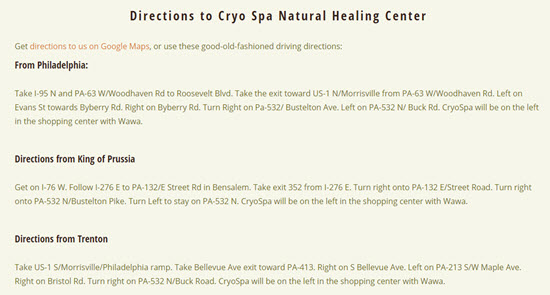
10. Work like a beast to pile up online reviews on a variety of sites (even on the mediocre ones).
Getting happy customers to speak up usually isn’t easy, but hey, few high-payoff things in life are easy. It’s worth the trouble.
Having impressive reviews makes your website’s job easier in at least two ways: people aren’t as likely to leave your site to look up your reviews (especially if they’ve already seen the reviews, and they’re more likely to arrive at your site pre-sold on how good you are.
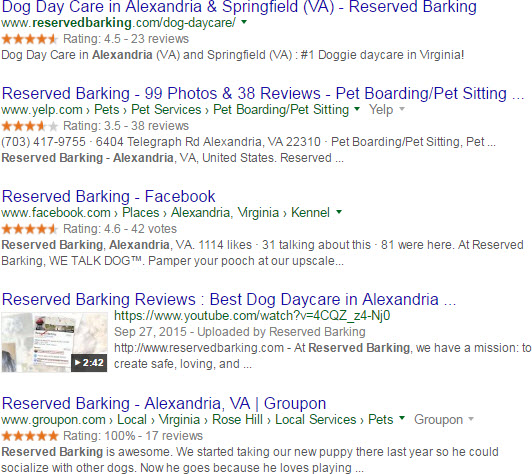
Your site can be a wounded animal and you’ll still probably get a surprising number of customers if your reviews stand out. But combine them with a sticky site (see points 1-8) and you’ll win yourself a full goblet and a pile of turkey legs at the Local Feast.
—
Can you think of more areas of overlap between local SEO and CRO?
What’s something you did that helped you on both counts?
Leave a comment!

One of the things we are doing more frequently (actually, a lot more frequently…) is blogging for our clients, especially with local news and information. Let’s say you have a dental practice in Marietta, Georgia (as an example without sharing our actual clients) – we would turn their website / blog into a local news media source, and share that content through their social media profiles. This is becoming even more profound with the introduction of Facebook Instant Articles.
We are finding, as a result of this process, not only are our local clients building substantial domain authority – but the domain authority is translating into dominate local rankings. In most cases, our clients are becoming the featured local business in their market which means they are far surpassing the authority of their next closest competitor.
Consistency and frequency of news content production and social distribution is key for this to work, but our fast growing client base and the data behind is evident that it does.
Piling up the good links is mighty important, for sure. Very few small businesses blog effectively, though.
Great to see this !!! I’m noticing more and more buzz on how valuable CRO is to SEO, and now this gives it the relevance to Local SEO.
I can vouch for Items 8 and 9 (Google map & old school driving directions) because they seemed to work well for Organic SERPs, which as we all know is a signal for Local now.
For #7, specifically description tags, we have been going by the rarely discussed but possibly important stats that if say if you start a meta description with a call to action, SERP CTR might improve. We made a tool that addresses this goal when we are optimizing an existing site, with the assumption that a call to action can be roughly equivalent to starting the meta description tag with a verb. To check out how well a site’s pages are optimmized in this way, the tool is at: onlineimpactgroup.com/verb
Thanks again for the great article and all the great references embedded in it!
Hey Steve,
I wouldn’t go so far as to say driving directions definitely are a factor, but I’m guessing they are, and in any case it doesn’t matter much. They do make for a better experience on-site.
Great Summary here – Thanks for this! Don’t overlook the power of clear simple call to actions in the form of buttons. Too many SMBs assume that visitors will click to the contact page to take the next step. Make it easy for all visitors to take the next step from every page. Clear bright buttons are not obtrusive – they are needed to guide action and will improve CRO immensely.
And this is one of the precise reasons why my team created the 7 second CTA test at ismywebsitegood.com (beta) — tests whether folks can see calls to action. Free trials available (not trying to sell here!!! But, feedback is a def plus!
Good call, Jeffrey. I wouldn’t say there’s too much overlap with local SEO, but yeah, the whole point is to make rain.
Thanks Phil 🙂 didn’t know about this post – reading it now – thanks again 🙂 —> 25 Principles of Building Effective City Pages for Local SEO
No way! 🙂
Many times we get hyper focused on 100% online marketing, 100% of the time. We tend to forget that our clients should be doing other offline marketing to help their businesses. I spend time helping my clients learn direct response marketing. It’s a big advantage that I’m in the same industry as my clients. I believe that my job is to help them suceed and that include all types of marketing. BTW, Very good info in the article. Keep up the good work.
Very true, Steven.
100% good horse sense in this post, Phil. Looking forward to sharing it.
Thanks, Miriam!
Great post Phil, thanks for sharing. One idea I’d contribute that I didn’t see mentioned is to take 3-4 reviews and add/embed them on your service/city pages and then add AggregateRating markup. There are some great WordPress plugins that simplify the process and will populate reviews from Facebook, Yelp or Google. For pages that are ranking, having review stars is a great way to make them stand out and increase CTR. Once a potential customer does land on your service or city page (that doesn’t suck), having reviews populate is great social proof that increases the chances of a lead or sale.
Good call, Brian.
Good post again Phil. Couldn’t agree more with the points you laid out as well as Brian’s above. The more opportunity to put review schema on pages to get the stars to show up in SERPs, the better. Potential customers love the stars….
As long as people don’t abuse it, I agree: those stars can be great.